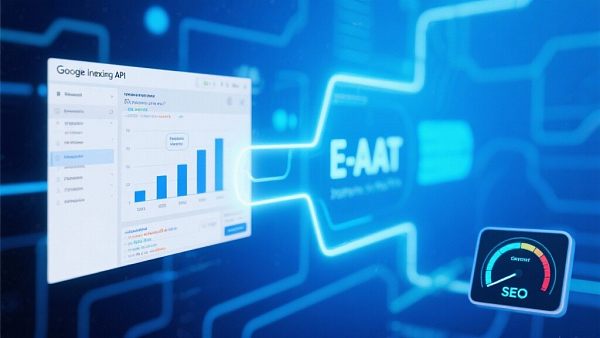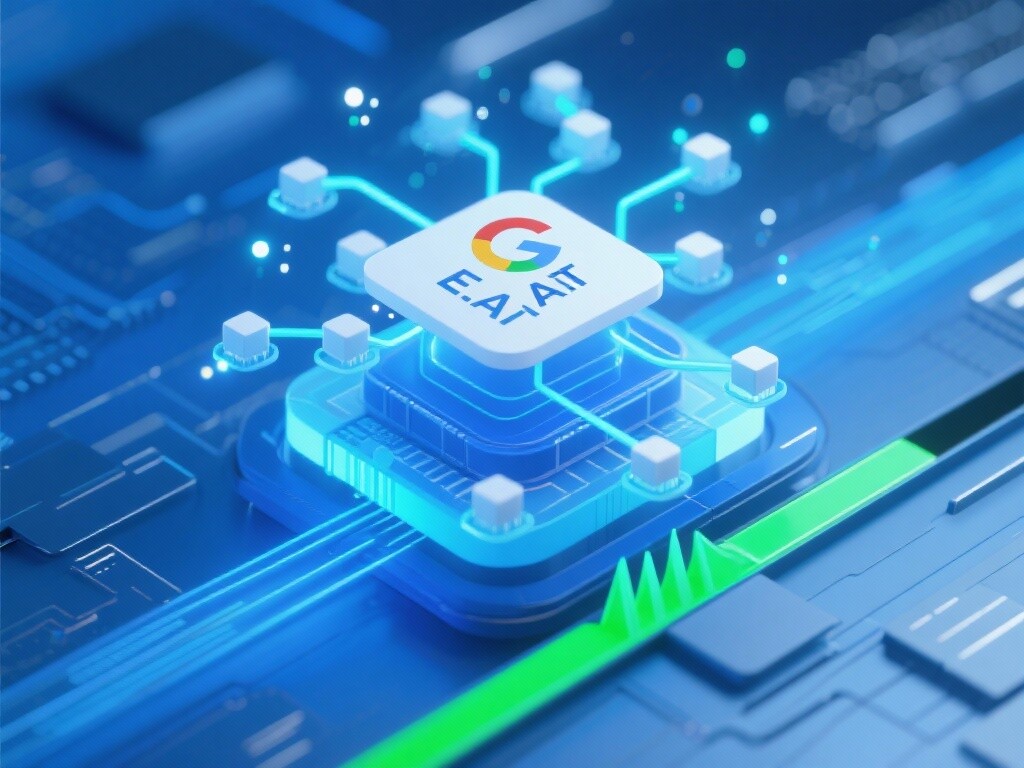EasyStore Cloud Intelligent Website Marketing System Platform!
1. How to achieve rapid website inclusion: core definition, strategic value and development history
1. Authoritative definitions and elements for rapid website indexing
**Rapid website indexing** refers to the process of having newly published or updated web content crawled, processed, and added to the index by search engines (primarily Google) as quickly as possible (ideally within minutes to hours) by optimizing the website's technical structure, enhancing content authority, and leveraging official search engine tools. Key elements include: **an efficient crawl budget, instant notifications (using the Indexing API), a clear website structure, and a high EEAT trust score**.
2. Three irreplaceable strategic values of rapid website inclusion
Speed is a competitive advantage in the information age:
- **Seize the ranking of time-sensitive content:** For foreign trade content with strong timeliness, such as news, activities, and sudden industry trends, rapid inclusion can ensure that the website **appears in the search results as soon as possible**, capturing huge instantaneous traffic.
- **Accelerate the promotion of new websites or new products:** New foreign trade websites or independent websites for new products often take several weeks to be consistently indexed by Google. Rapid indexing can **introduce products to target customers sooner**, accelerating inquiry conversion.
- **Countering content plagiarism and protecting originality:** Rapid inclusion of content can **establish evidence of your content’s “first release” in search engines**, effectively combating plagiarists and protecting the SEO weight of original content.
3. The development history and evolution of website indexing technology
Early (2000s): Relying primarily on organic crawling and sitemap submissions, resulting in long indexing cycles. Mid-2010s: Emphasis on high-quality backlinks and activity to attract crawlers, and the concept of crawl budgets was introduced. Modern (2020s to present): Entering the era of "instant indexing." Core technologies include the use of the Google Indexing API, JavaScript rendering optimization, and the use of the EEAT as a key factor in increasing crawl budgets. The initiative for indexing shifted from search engines to website owners.
2. Five core technologies for rapid website indexing: API, Sitemap and EEAT collaboration

Master the techniques and strategies for proactively notifying search engines:
1. Application principle of Google Indexing API (most efficient)
How it works: The Indexing API allows websites to directly notify Google that a URL has been published or updated, bypassing the traditional crawl cycle. In practice: This is the fastest way to get indexed, particularly for sites with job postings and live broadcasts. For general content sites, while official restrictions apply, deploying structured data can indirectly improve crawling efficiency.
2. Crawl Budget and Website Speed Optimization Principles
Principle: Google allocates limited crawling resources to each website. Practice: By optimizing website loading speed (meeting Core Web Vitals) and removing unnecessary broken links and redirects, we can ensure our crawlers can crawl more valid pages as quickly as possible within the time constraints. Increased crawling efficiency naturally speeds up the inclusion of new pages.
3. XML Sitemap Priority and Lastmod Deployment Principles
Principle: A sitemap is a map that guides crawlers. Practice: In your sitemap file, ensure that new or critical pages are given the highest priority. Use the lastmod tag to accurately indicate when a page was last updated. Submit a compressed sitemap to Google Search Console, and use the Sitemap Index to manage multiple sitemap files for large websites.
4. High-quality internal links and weight transfer principles
Principle: Crawlers discover new pages through links. Practice: After publishing a new page, immediately establish internal links from the homepage, core category pages, or high-authority blog posts, using the target keyword as anchor text. A strong internal linking structure quickly transfers PageRank to the new page, accelerating its crawling and indexing.
5. How EEAT authority and trust improve crawling frequency
How it works: Google tends to crawl authoritative websites more frequently. Practice: By publishing in-depth, original content, demonstrating clear author/brand credentials (EEAT elements), and consistently acquiring high-quality backlinks, you can improve your website's overall trustworthiness. This will help Google identify you as a "high-value information source," leading to higher crawl frequency and indexing speed.
3. Four core technical features and applications for rapid website indexing
1. Technical Features: Automated Inclusion Notification Module
Features: Integrates content publishing with the indexing notification process. Application: For foreign trade websites using a CMS like WordPress, deploying an automated plugin or custom code can automatically ping the Sitemap, automatically call the Indexing API (within compliance), and automatically generate internal links after new pages are published, maximizing indexing efficiency.
2. Application Practice: New Product Release and Instant Indexing for Foreign Trade
Application: When publishing new product pages, foreign trade companies can immediately submit them using the URL Inspection Tool (Instant Index Request) and the Indexing API. Furthermore, manually add internal links to the homepage or in the "New Product Recommendations" section to ensure that new products are quickly indexed by Google and have ranking potential before they are officially launched.
3. Application Practice: Diagnosis of Indexing Efficiency of Large-Scale Websites
Application: For large-scale international trade directories with thousands of pages, use the Google Search Console's "Crawl Statistics" report for in-depth diagnostics. Analyze the total number of crawl requests, crawl time, and crawl status codes to identify areas of crawl budget waste. Use Robots.txt to block low-value pages and focus crawl resources on key conversion pages.
4. Application Practice: Solving the Problem of Delayed JavaScript Rendering
Application: Many modern websites rely on JavaScript to render content, which can cause delays in Google indexing. By adopting **Server-Side Rendering (SSR)** or **Hybrid Rendering** technology, you can ensure that key SEO elements (such as titles, meta descriptions, and body content) are visible in the **initial HTML**, eliminating the slow indexing issues caused by rendering delays.
4. Comparative Analysis of Rapid Collection Methods and Traditional Collection Modes and Industry Scenarios

1. Comparative Analysis of Rapid Indexing Methods vs. Traditional Indexing Models
2. Typical industry scenarios for rapid inclusion methods
Rapid inclusion is a core competitiveness in the following foreign trade industries:
- **Foreign Trade B2B Industry News/Event Release:** Rapid collection ensures that corporate news releases receive immediate exposure, especially before industry exhibitions or major releases.
- **Cross-border e-commerce hot product independent website:** Quickly launch new product pages and include them immediately to seize the **search traffic** after the social media explosion.
- **Technical blogs/knowledge-based service websites:** Rely on original and timely content. Rapid inclusion can establish the website's **knowledge authority status (EEAT)** in Google.
3. Standard certification and professional specifications for rapid inclusion services
Criteria for evaluating professional rapid inclusion services:
- **Inclusion rate commitment:** The service provider should promise that the **inclusion success rate** of key pages (non-NoIndex pages) will reach the industry's high standards (usually above 95%).
- **Compliance Commitment:** Ensure that all technologies used (especially the deployment of the Indexing API and Robots.txt strategy) **strictly comply with Google White Hat SEO specifications** to avoid any potential penalty risks.
- **Crawl report analysis skills:** Ability to provide and interpret **in-depth crawl statistics reports** from **Google Search Console** and formulate continuous optimization strategies accordingly.
5. Immediately enable the rapid inclusion strategy and reset the content waiting period to zero!
Are you struggling with long delays in indexing your new website or delayed inclusion of your new product launch? In the fiercely competitive international trade market, a single step behind could mean the loss of a customer! Our Fast Website Indexing Service deploys the Indexing API, optimizes crawl budgets, and strengthens EEAT signals to ensure your content is instantly indexed by Google upon publication. Schedule a free "Website Indexing Efficiency Diagnosis" today. We'll identify the root cause of your slow indexing and provide a customized solution for efficient inclusion!
Click here to get free collection efficiency diagnosis6. Frequently Asked Questions (FAQ)
1. Why is my website’s content quality so high, but the indexing speed is still so slow?
Answer: Content quality (EEAT) is the foundation of ranking, but indexing speed depends more on technical factors, such as a low crawl budget, a cluttered internal link structure, slow server response times (impacting crawler efficiency), or JavaScript rendering delays. Our fast indexing service addresses these technical bottlenecks.
2. Can the Google Indexing API really achieve instant results? How applicable is it to foreign trade websites?
Answer: The Indexing API is currently the closest mechanism to instant indexing, technically enabling it to be indexed within seconds. Although Google officially limits it to time-sensitive content like recruitment and livestreaming, through compliant structured data deployment and established authority, it remains a powerful tool for improving indexing efficiency for frequently updated foreign trade news, events, and key content.
3. Should a new website focus on inclusion or ranking first?
Answer: Indexing is a prerequisite for ranking. A page that isn't indexed will never rank. Therefore, new websites should prioritize getting into the Google index through rapid indexing strategies. Once indexed, optimize rankings through content quality and link building.
4. How important is it to improve website speed for quick inclusion?
Answer: It's crucial. Your website's speed directly determines how many pages Google's crawler can crawl within its limited crawl budget. The faster your website's speed, the more efficient the crawler, which in turn increases your crawl budget and speeds up the discovery and indexing of new pages.
7. Customer Reviews
Mr. Zhao, CEO of a cross-border SaaS tool developer
"We release important product updates and technical documentation every day. In the past, indexing was very slow, impacting customer acquisition. After enabling the fast indexing service, using the Indexing API and crawl budget optimization, our new content is generally indexed by Google within an hour. We've successfully captured many high-value long-tail keywords and significantly improved our brand's professionalism."
Manager Wu, SEO manager for a large B2B industrial equipment foreign trade website
"Our website is very large, and insufficient crawl budget was a constant concern. By using our service provider's crawl statistics report analysis and flattening our internal link structure, we've successfully increased crawl efficiency by 40%. Newly released product brochures and industry news are now indexed within 24 hours, significantly improving our ability to respond to market changes."
FAQ

Customer Reviews


